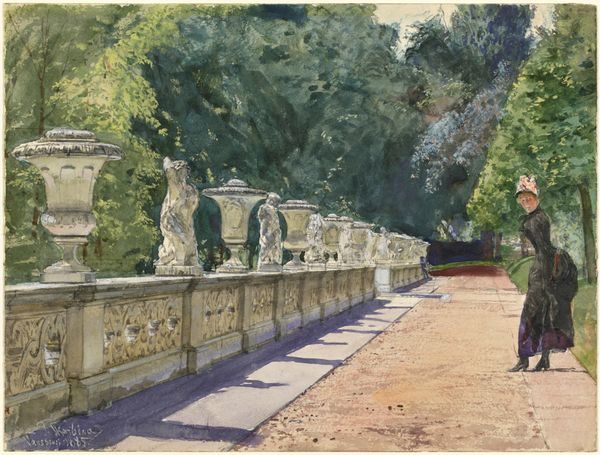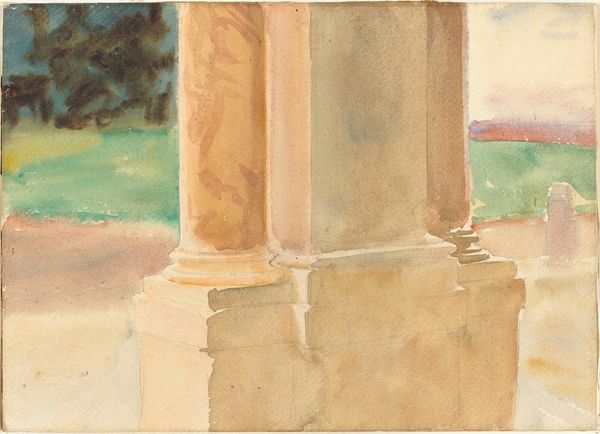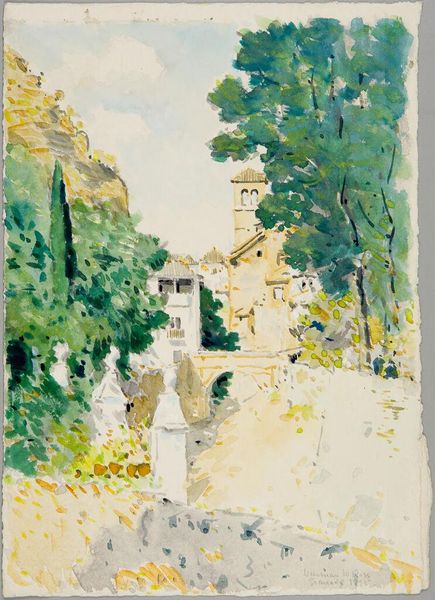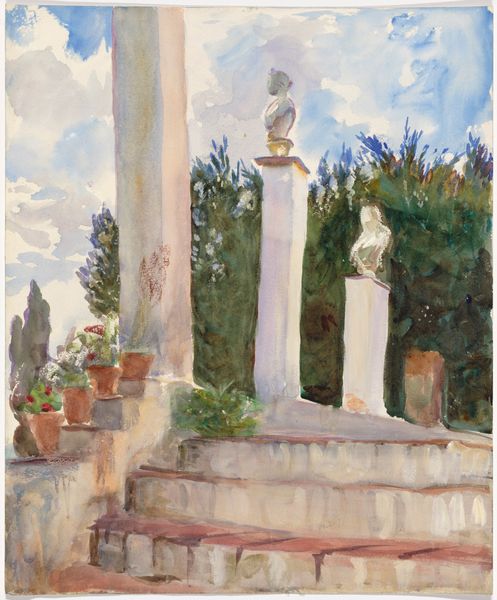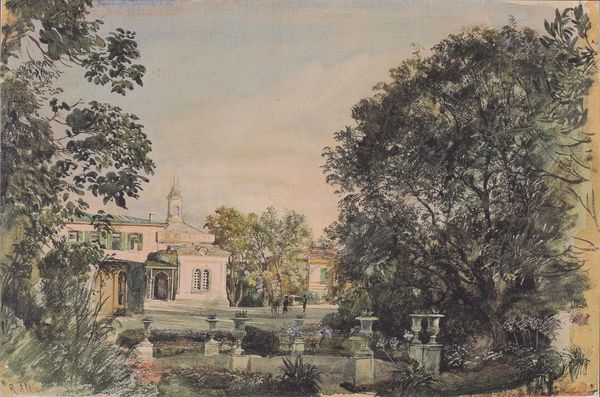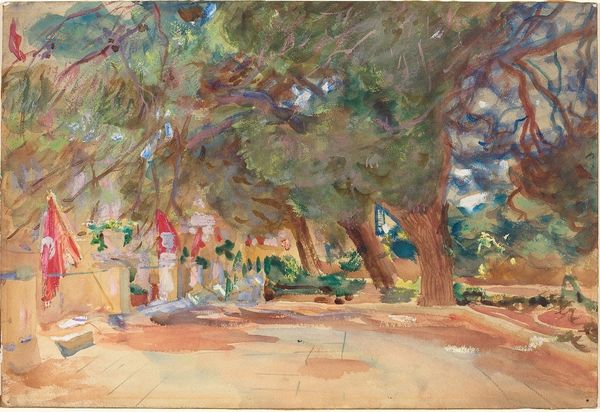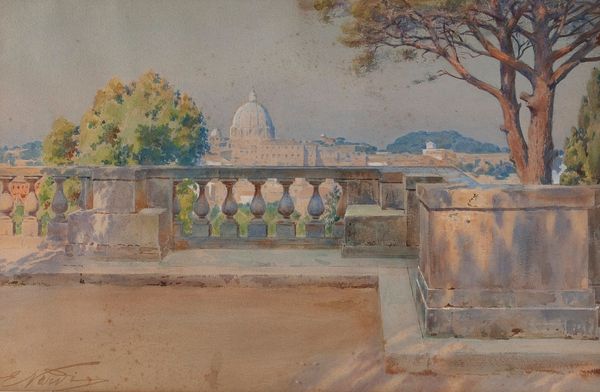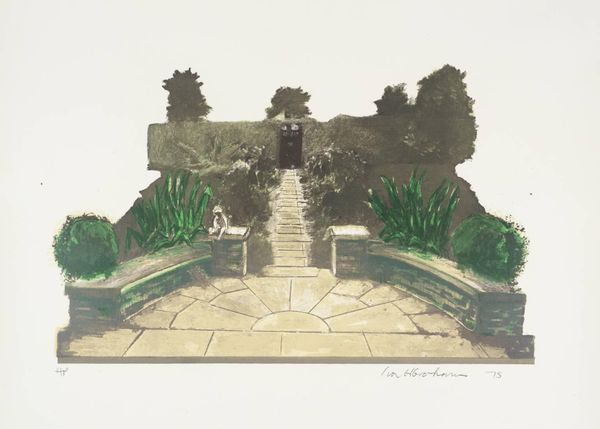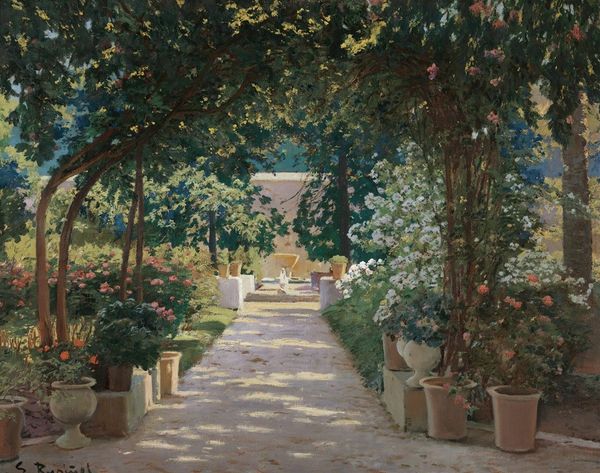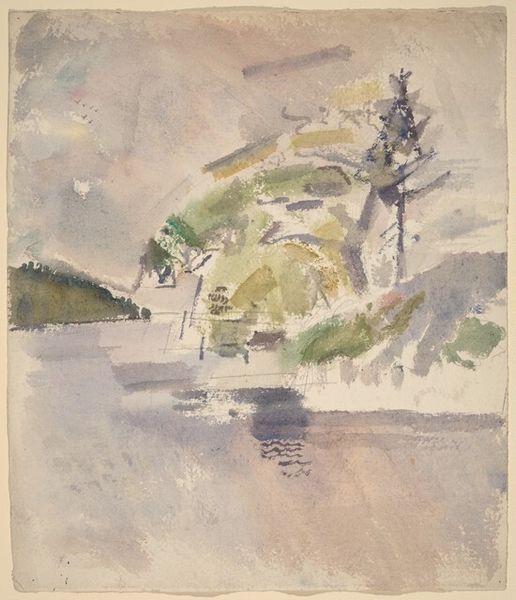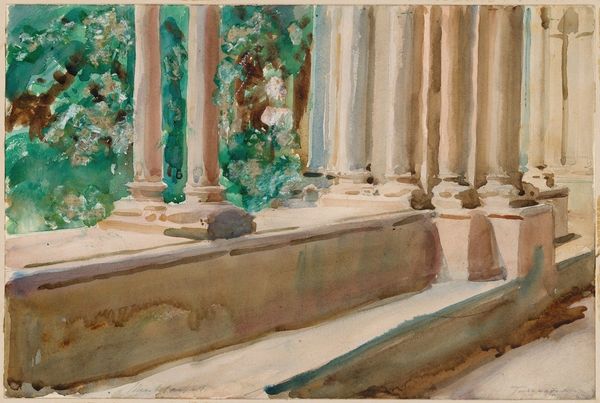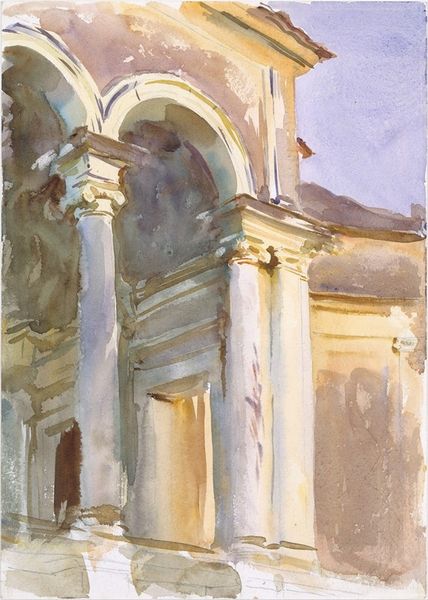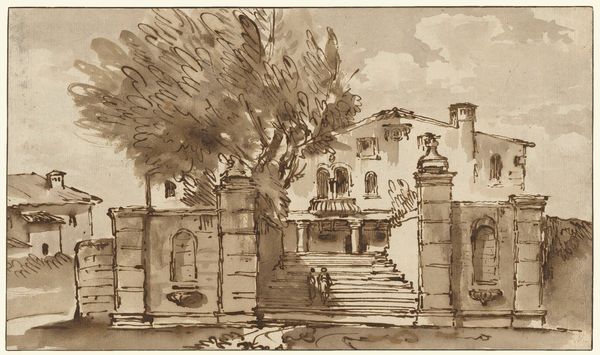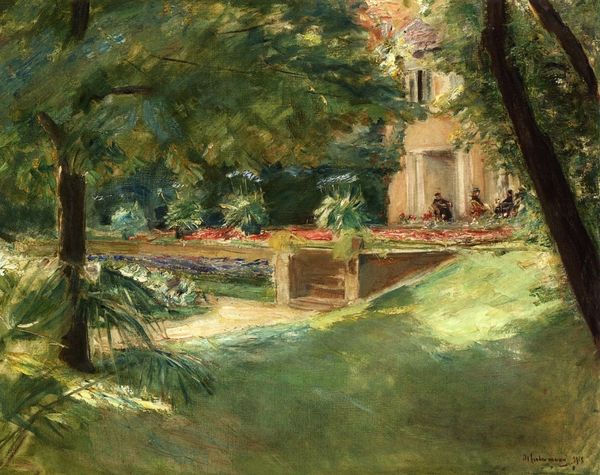
Copyright: Public Domain: Artvee
John Singer Sargent captured this terrace with watercolor, likely in the early 20th century. The balustrade, and the urn, prominently displayed, echo classical forms, reaching back to ancient Greece and Rome, where such architectural elements symbolized order, civilization, and a cultivated appreciation for beauty. We see similar urns appear in funerary art, like the Elgin Marbles, where they represent mourning and remembrance. Even in the Renaissance, artists integrated classical motifs to evoke a sense of historical continuity and intellectual sophistication. The repetition of these forms across time and cultures suggests a collective human desire to connect with an idealized past, a longing for stability and permanence in a world of constant change. The serene landscape, with its calm sea and manicured garden, evokes a sense of nostalgia. The terrace could also represent the emotional and psychological desire for an ordered and harmonious existence, a space where one can retreat from the chaos of the world and contemplate the enduring values of beauty and tranquility.
Comments
No comments
Be the first to comment and join the conversation on the ultimate creative platform.
